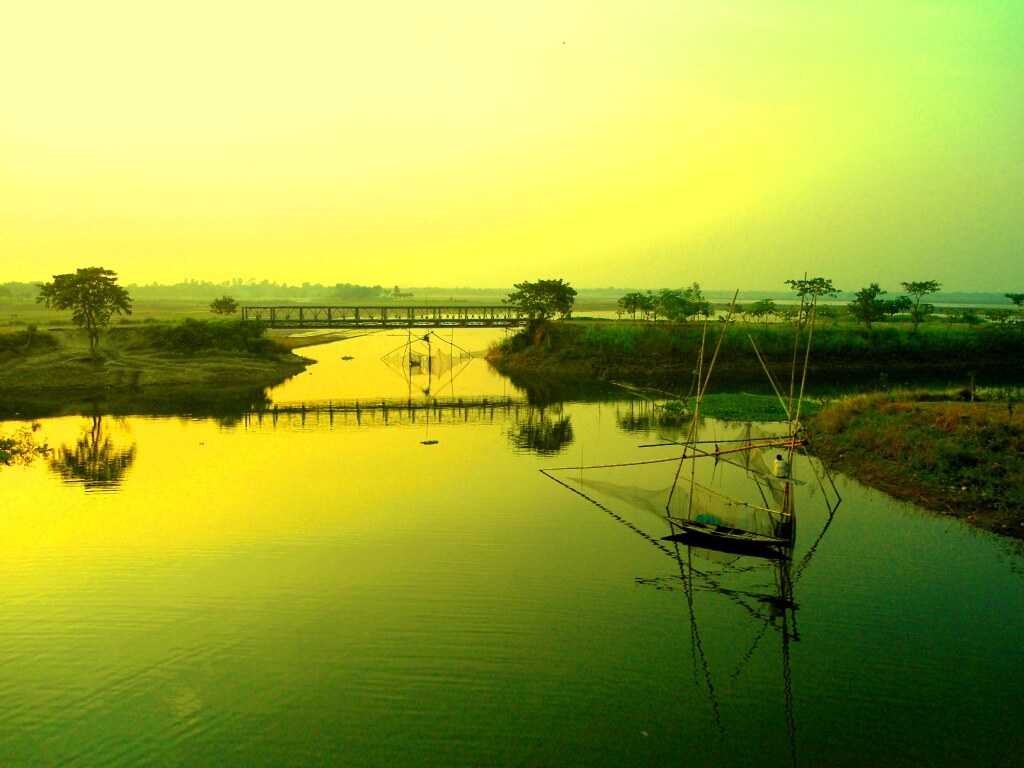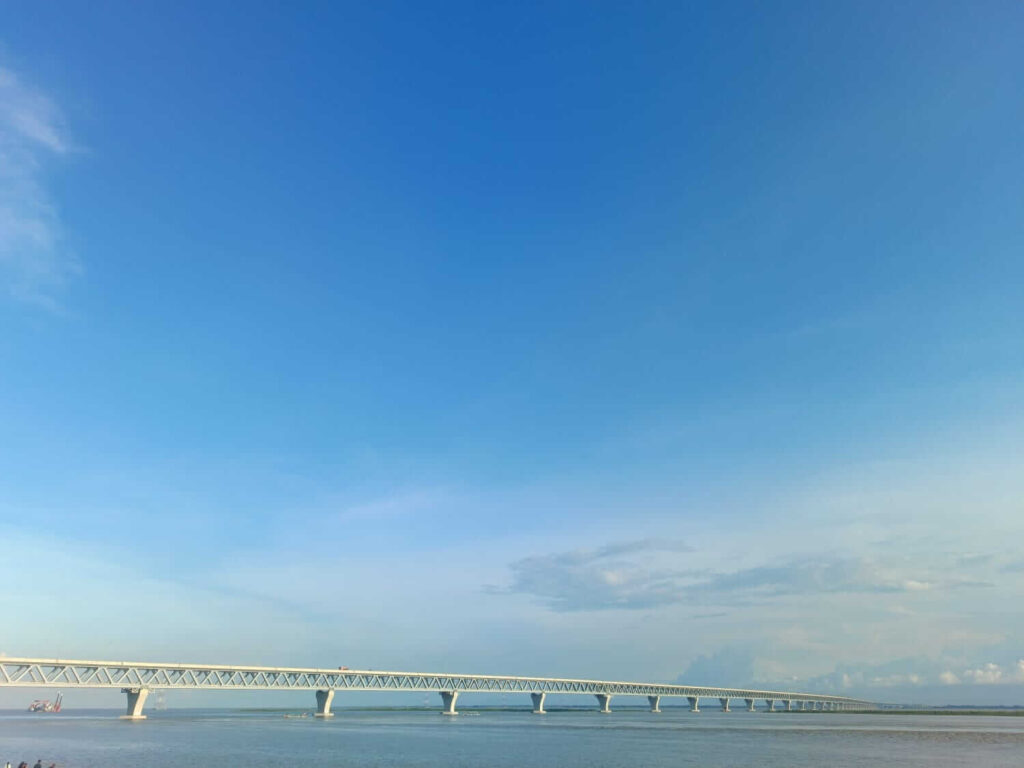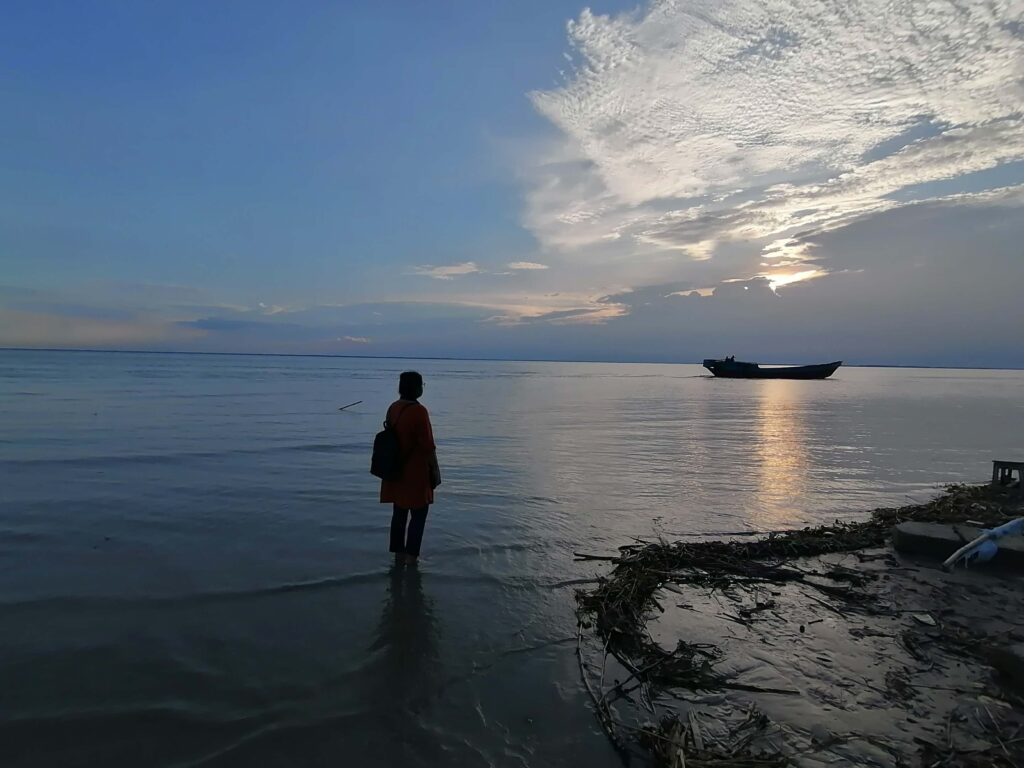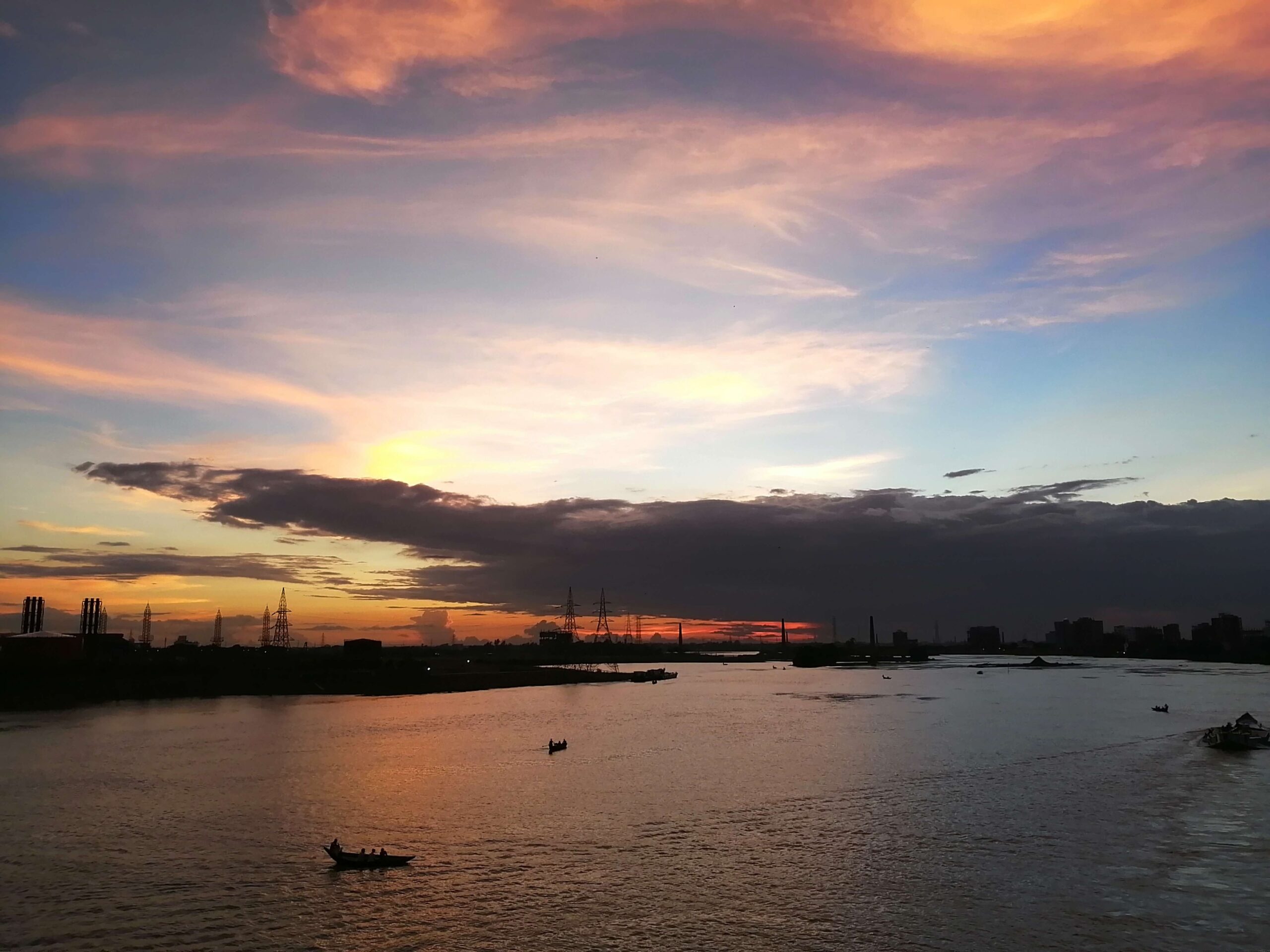Table of Contents
Bangladesh, often referred to as the “Land of Rivers,” is one of the most riverine countries in the world. More than 700 rivers flow through the country, shaping its geography, economy, culture, and the daily lives of its people. These rivers are part of the world’s largest delta system — the Ganges-Brahmaputra-Meghna (GBM) Delta. Their vast network makes Bangladesh fertile, scenic, and also vulnerable to floods and erosion. The rivers are not just water bodies; they are the veins that sustain the nation’s ecological and economic lifeblood.
Major River Systems
The river system of Bangladesh can be categorized into three major basins:
1. The Ganges (Padma) Basin
The Ganges enters Bangladesh from India at Rajshahi and is locally known as the Padma. It is a major trans-boundary river and plays a crucial role in agriculture and navigation. The Padma is joined by the Jamuna at Aricha and eventually meets the Meghna near Chandpur before flowing into the Bay of Bengal.
2. The Brahmaputra (Jamuna) Basin
The Brahmaputra originates in Tibet, flows through India, and enters Bangladesh as the Jamuna River. It is one of the widest rivers in the world and highly braided, making it prone to frequent course changes. The Jamuna is vital for inland water transport and sediment delivery for delta formation.
3. The Meghna Basin
The Meghna is formed from the confluence of the Surma and Kushiyara rivers in northeastern Bangladesh. As it flows southward, it becomes one of the most powerful rivers in the country. The lower Meghna carries the combined waters of the Padma and Jamuna to the sea.
Other Notable Rivers
Apart from the three major rivers, Bangladesh is crisscrossed by numerous other important rivers:
- Teesta River: Originating in the Himalayas, the Teesta flows through the north of Bangladesh and joins the Jamuna. It’s a vital source of irrigation but often a subject of water-sharing disputes with India.
- Ariyal Khan, Dhaleshwari, and Turag: These are distributaries of the main rivers and flow through central Bangladesh, including the capital Dhaka.
- Karnaphuli River: Originating in the Chittagong Hill Tracts, this river flows through Chattogram and is home to the country’s major seaport.
- Sangu and Matamuhuri Rivers: These flow through the southeastern hill tracts and are known for their scenic beauty and fast currents.
Economic Importance of Rivers
Rivers are integral to Bangladesh’s economy. Their significance extends across sectors:
1. Agriculture
Floodplains formed by river deposits are extremely fertile. More than 80% of the land in Bangladesh is floodplain, making it ideal for rice, jute, and vegetable cultivation. Rivers also serve as natural irrigation systems.
2. Fisheries
Rivers provide a livelihood to millions of fishermen. The riverine fish, such as Hilsa (Ilish), are not only a major food source but also a national delicacy and export item.
3. Transportation
Before the development of roads and railways, rivers were the primary mode of transport. Even today, water transport remains crucial in rural and remote areas. Large cargo ships use the Meghna and other rivers to connect inland cities to seaports.

4. Energy
Several rivers are used for hydroelectric projects and power generation. The Karnaphuli Hydro Power Station is a notable example.
5. Tourism
River cruises, fishing, boating, and riverfront festivals draw tourists from both home and abroad. Locations like the Padma River near Rajshahi, Jamuna Bridge, and the Sangu River in Bandarban are popular tourist attractions.

Cultural and Religious Significance
Rivers hold deep cultural and spiritual value in Bangladesh. Traditional songs, poetry, and stories are often centered around rivers. Celebrated poets like Kazi Nazrul Islam and Jibanananda Das romanticized rivers in their works.
Religious rituals like Ganga Snan, Borsha Baran, and boat races are closely tied to rivers. In rural areas, riverbanks are community gathering points for festivals and daily activities.
Challenges Facing Rivers
Despite their importance, the rivers of Bangladesh face several challenges:
1. Pollution
Industrial waste, sewage discharge, and plastic dumping have severely polluted rivers like the Buriganga, Turag, and Shitalakkhya. The once-thriving aquatic life is now threatened.
2. Encroachment
Urbanization and illegal land grabbing have led to river encroachments, reducing water flow and causing navigational issues. The capital city, Dhaka, has seen significant riverbank violations.
3. River Erosion
Riverbank erosion displaces thousands every year, especially along the Jamuna and Padma rivers. Entire villages and farmland are lost to this natural disaster.
4. Siltation
Many rivers suffer from heavy silt deposits, causing reduced depth and hindering navigation. Siltation also affects irrigation canals and increases flood risks.
5. Climate Change
Erratic rainfall, glacier melting, and rising sea levels are altering river flow patterns. This unpredictability affects agriculture and increases the frequency of floods and droughts.
Government and Community Efforts
The Government of Bangladesh, in partnership with NGOs and international bodies, is actively working to protect and manage the rivers. Some initiatives include:
- River Dredging Projects: To restore navigability and prevent flooding.
- Riverbank Protection: Using geo-bags and concrete blocks to reduce erosion.
- Pollution Control: Implementing stricter environmental laws for factories.
- Water-sharing Agreements: Negotiating with neighboring countries to ensure equitable distribution of water from shared rivers.
- Community Awareness Programs: Involving local people in river conservation efforts.

Rivers are the soul of Bangladesh. They have shaped its land, nurtured its people, and built its civilization. But today, these lifelines are in danger due to pollution, overuse, and neglect. A collective national and global effort is necessary to protect the rivers of Bangladesh. The survival and prosperity of the country depend on keeping its rivers alive, clean, and flowing.


Wiki says: According to Bangladesh Water Development Board (BWDB), about 907 rivers currently flow in Bangladesh (during summer and winter), although the numbers stated in some sources are ambiguous. As stated by a publication called Bāṅlādēśēr Nôd-Nôdī (‘Rivers of Bangladesh’) by BWDB, 310 rivers flow in the summer although they republished another study in 6 volumes where stated 405 rivers. The number differs widely due to lack of research on the counts and the fact that these rivers change flow in time and season. According to Banglapedia, 700 rivers flow in Bangladesh, but the information is old and obsolete. Although, historical sources state about 700 to 800 rivers, most of them have dried up or are extinct due to pollution and lack of attention. The numbers also differ because the same rivers may change names in different regions and through history. read more

Leave a Reply